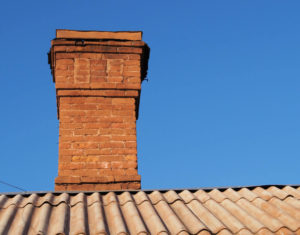Your chimney is an important system in your home. It may be the largest system in your home and possibly the most dangerous. It takes many different parts working together properly for the chimney to work efficiently and safely. If any part of your chimney becomes damaged, efficiency will drop and safety will immediately be a concern. Of all the things that can go wrong with your chimney through the years, liner damage is common, and it’s also dangerous.
The Liner and Its Multiple Jobs
 The liner is an important barrier for your chimney. It’s extremely large, reaching from the top of the flue to the throat of the chimney and top of the firebox. The liner needs to be durable. It has to withstand extreme temperatures, constant exposure to corrosive materials, and the test of time. It’s important to have a quality liner. It’s also important to have an appropriate liner for your fuel type so that it can handle its many jobs.
The liner is an important barrier for your chimney. It’s extremely large, reaching from the top of the flue to the throat of the chimney and top of the firebox. The liner needs to be durable. It has to withstand extreme temperatures, constant exposure to corrosive materials, and the test of time. It’s important to have a quality liner. It’s also important to have an appropriate liner for your fuel type so that it can handle its many jobs.
- The liner protects the masonry from corrosive materials. Without the liner, soot and creosote would corrode the masonry over time, damaging the mortar and loosening the bricks eventually.
- The liner prevents harmful gases from passing through the masonry. Without the liner, the smoke, carbon monoxide, and other harmful gases would pass through the porous masonry and into your home. This creates a serious health hazard and possible carbon monoxide exposure, which can result in serious injury and even death.
- The liner prevents heat from transferring through masonry to structural materials of the home. Without the liner, the extreme heat from the fire would pass through the masonry and heat adjacent wood materials. Over time, these support and structural materials would become brittle and weak—both a fire and a structural hazard.
- The liner facilitates smooth airflow to vent the fire. Without the liner, the smoke, heat, and gases might struggle to rise up the chimney. The smooth surface of the liner promotes optimum airflow, and the flue liner should be sized precisely for the capacity of the fireplace for efficient and safe ventilation.
Repairing and Relining Your Chimney
You might have owned your home for a week or a decade and suddenly need a new liner. No one can guess when an old clay tile liner will begin to deteriorate, and if you own an older home with a masonry chimney, you probably have one. Clay tile is a common type of liner, but they are commonly replaced because of damage or conversions to gas. Clay tile liners are not safe for use with gas fires.
When we repair or replace liners for our customers, we recommend metal liners. We recommend Ventinox and Homesaver Pro stainless steel liners. Stainless steel liners are safe for use with all fuel types and are durable and can last your lifetime! Don’t leave your liner up to chance. If you feel your masonry is excessively hot or you see clay tile pieces in your firebox, you probably have liner damage. Get your liner repaired or replaced now. You can schedule with New Buck Chimney Services now and your system will be ready for a fire this fall.
